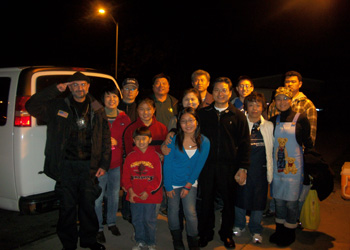 By Eunice Kim, Arnold O. Beckman High School, Grade 9
By Eunice Kim, Arnold O. Beckman High School, Grade 9
March 21, 2011
On Thursday night, March 11, 2011, a catastrophic disaster of epic proportions struck the city of Honshu, Japan. While the local residents braced themselves for aftershocks and tsunami threats, the rest of the world was left in shock and awe. It didn’t take more than a few minutes for the world to start responding via social networking sites such as Facebook and Twitter. Celebrities began posting messages about how to donate to the Red Cross and other disaster relief organizations. Everyone with a Twitter account seemed to suddenly have a heart full of compassion and concern for the victims who have lost their homes and loved ones.
When natural disasters like Hurricane Katrina, the Haiti Earthquake, and now, the disasters in Japan happen, Americans are quick to respond with concern, prayers, money, and time. Perhaps, disaster relief sounds more urgent than prolonged homelessness. Nevertheless, it is noteworthy that it takes a disaster of epic proportions in order to rattle our heartstrings toward the displaced. At the end of the day, aren’t the homeless, who live down the street, just as displaced as victims of natural disasters?
Not everyone is disregarding this oxymoronic situation. According to the Mercy House website, Mercy House “is a non profit organization founded in 1988 by Father Jerome T. Karcher. Mercy House has developed a Continuum of Care to provide homeless prevention, emergency services, transitional housing and permanent housing… to homeless men, women, and children living in Orange County…” The goal of Mercy House is “to end the cycle of homelessness of those who enter our system of care.”
While organizations like Mercy House are a valuable asset to our communities, they cannot continue to function without the help of volunteers.
James Kim, founder of the volunteering club at Irvine Baptist Church (IBC) explained, “The program opens up a national guard facility during the weekends so that more homeless people can sleep in a warm building. American churches have been involved for many years, but now a lot of Korean churches, like IBC, are diligently serving there too.”
The small, but dedicated group of adults and teens spend one weekend a month from December to March serving food and helping out at the facilities.
“It was my first time helping out. I was nervous at first,” admitted Hannah Gil, a 6th grader at Stonegate Elementary School. “But after I started handing out food, I knew it was the right way to spend my Saturday.”
David Han, an 8th grader at Pioneer Middle School remarked, “The people receiving the food just kept on repeating “God bless you” and kept thanking us. All it took was seeing their big smiling faces to make me feel like I wanted to continue serving.”
It doesn’t take a lot to get hooked on serving the less fortunate. It may even help put things into perspective.
Some people regard the homeless as lazy or even dangerous. This misconception may deter people, especially young people, from volunteering to serve the homeless on a regular basis, or even once.
James Kim noted, “Many of the homeless aren’t homeless because they are criminals or addicts. They are just needy human beings who faced real life problems, like losing their jobs and going into debt. Many of them don’t have a choice, but to sleep on the streets.”

